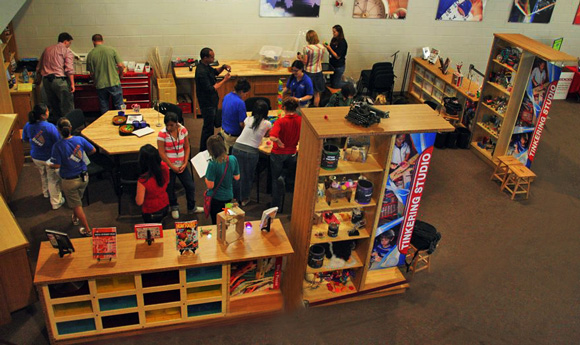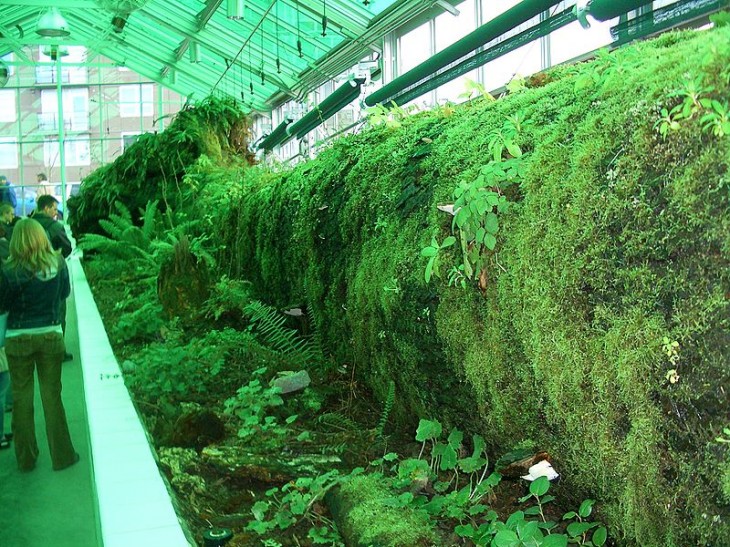
Tinkering Studio – Exploratorium
In today’s designed world we are surrounded by or immersed in spaces and experiences that have been carefully thought out to the nth degree. An example that we are all familiar with are the “lands” and “kingdoms” one finds in the Disney parks or Universal theme park. In these instances often we enjoy these experiences as we look to be transported to a fictional world and are accepting of this conceit. It is a non-reality that is authentic.
But in our designed world we also find ourselves in real places – coffee shops, exhibitions, restaurants, stores that also attempt to set a place, a location, a time that are special – but often we are struck that these feel fake, inauthentic and we leave dissatisfied. Why?
These thoughts came to mind when recently Colin Raney IDEO commented at the SEGD conference in New York that:
Ever evolving experiences provide authenticity and engagement.
It struck a chord that this phrase may cover many of the most recent experience trends in science centers and museums as well as some of the most popular.
Take for example the rise of Tinkering or “Making” spaces – whether it be Maker’s Faire or Tinkering studio space in museums. While certainly there are learning impacts that these spaces provide they also seem to be places that people enjoy and find “real.” Certainly these are spaces whose outcome and experiences are always evolving and changing.
Lab spaces like those at the Science Museum of Minnesota or those that ALCHMEY studio has had experience with at Liberty Science Center and the Tech Museum
 Infection Connection Lab – Liberty Science Center
Infection Connection Lab – Liberty Science Center
are also popular and once again these spaces change and evolve and have the ability to evolve and adapt.
There are other spaces such as these that include merging social media/exhibit spaces and art/science galleries like the Science Gallery in Dublin that come to mind as spaces or experiences that evolve. Additionally spaces that engage the natural world and its constantly changing nature also evolve over time. Parks, sculpture gardens and pieces such as the Neukom Vivarium at the Seattle Museum of Art’s Olympic Sculpture Park.
are examples.
 Neukom Vivarium - Olympic Sculpture Park
Neukom Vivarium - Olympic Sculpture Park
This leaves some open questions that are worth exploring
- Can we study and evaluate what experiences are deemed more “authentic.” What makes them so?
- Do they attract more engagement? Do they have more impact?
- How about creating a “measurement” of how much an experience can evolve?
If you are interested in joining with ALCHEMY studio in exploring these let us know. Meanwhile we would love to hear of examples you feel match this idea.